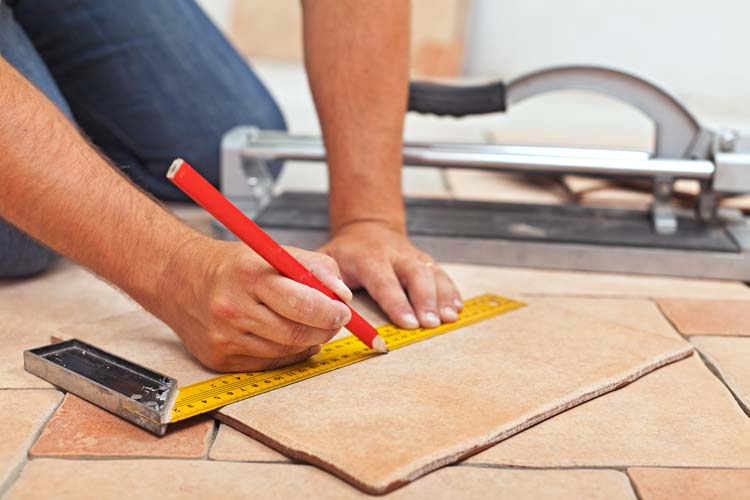How Much Flooring do I Need?
Measure the width and length of your room in feet and multiply the figures together to get a square feet figure. Consider adding 5-10% extra, to account for waste. To calculate the flooring cost, multiply your square feet figure by
your price-per-square-foot.
When it's time to get new flooring fitted, excitement can sometimes be mixed with dread. Daunting prospects include moving all the furniture out (and thereby discovering exactly what's been lurking behind the couch for 10 years), but before even that, there is the measuring up to do.
Take no chances; take the dread and doubt out of the scenario with our handy guide and calculator to help you calculate for the right amount of flooring.
On this page:Room size calculator
Stage 1: Measure the room
The very first thing you need to do, whether you've chosen floorboards or tiles, is to calculate the area of your room.
Keep in mind while you do this that you need to consider ALL floorspace - so remember to open cupboard doors before you start, and factor-in any other nooks and crevices.
To work out the square footage, just multiply the width of the room by the length, ensuring both width and length measurements are in feet. The number you end up with is the area of the floor in square feet.
You can use the calculator at the top of this article for peace of mind in stage one!
Irregular-shaped rooms
If your room is an irregular shape, or you want to purchase the same flooring to go in several different rooms, you can sketch out a floor-plan and divide it into boxes or regular shapes. Then, just calculate the square footage of each component and add them together to get the total.
Next steps for stone and ceramic floor tiles

Stage 2
In stage one, you worked out the square footage of your space. In stage two, you need to work out how many tiles it will take to fill that space. Obviously, this is dependant on the size of tiles you've chosen.
Just use our helpful chart below to find the number you need to divide by. Then, just divide the square feet area of the room by the number from the chart.
Your tile size / The number to divide by
- 4" x 4" / 0.1089
- 6" x 6" / 0.25
- 9" x 9" / 0.5625
- 12" x 12" / 1
- 18" x 18" / 2.25
E.g. A 140 sq. ft room is going to be fitted out with 9" terracotta floor tiles, so you divide 140 by the number from the chart, which for 9" tiles is 0.5625.
140 ÷ 0.5625 = 248.9 tiles
Stage 3
The final stage is just to buy a few more boxes than you think you need; you will definitely use more than the number you calculated in the second stage. Tiles are likely to get broken during the fitting process, and it's always a good idea to keep a spare pack for years in the future in case any get damaged. Stone tiles can vary due to their natural colouring, and manufacturers can vary or discontinue lines, so do buy extra in the first instance, rather than hoping for a close enough match later down the line.
To work out how many extra to get, multiply the number of tiles by 1.05 for a 5% increase, or by 1.1 for a 10% increase.
E.g. 248.9 x 1.1 = 274 tiles (always round up the decimal point to give a more generous margin)
Next steps for hardwood and laminate floorboards

When purchasing your floorboards, buy 5-10% more than the total calculated in stage one. The way boards are cut to fit means there will be plenty of waste, and you might even discard some floorboards if they have irregular patches of colour.
Neglecting to buy extra would be sure to leave you with a deficit, so play it safe with a margin of 5-10% (based on the shape of your room and the type of boards. Laminate floorboards in a square room are likely to lose less in offcuts and waste than natural hardwood in an irregular shaped room).
Simply multiply the room's square feet area (calculated in stage one) by 1.05 to get a 5% increase, or by 1.1 to get a 10% increase. If you want some help with this, you can calculate percentage increase with this calculator.
Calculate flooring cost
To calculate your flooring cost, simply multiply your total square feet figure by your quoted price per square foot, or you can use our calculator, featured at the top of our article.
So there you have it! Be sure to measure carefully and buy a bit of surplus, and you'll be walking on air (and a nice new floor).
Measuring for flooring - explainer
This video by The Fixer takes you through his process for measuring your room for new flooring.
If you have any problems using our calculator tool, please contact us.
